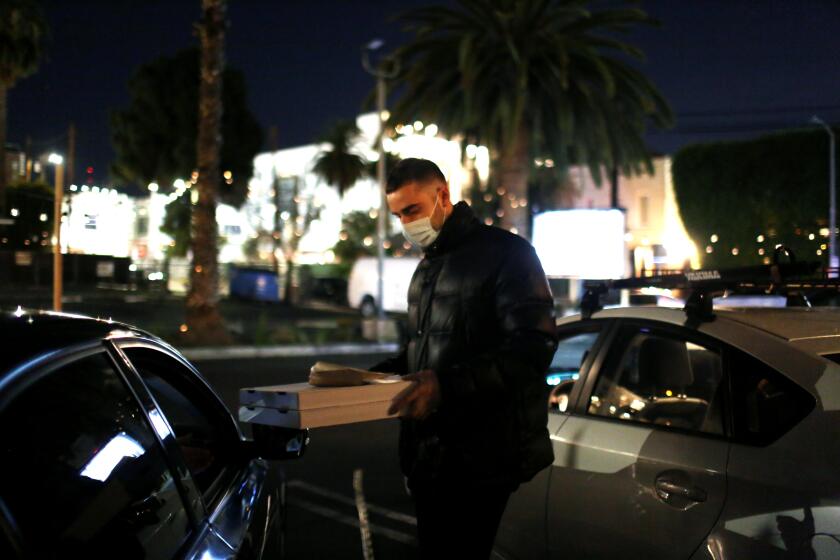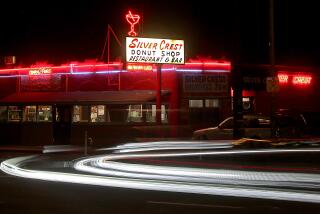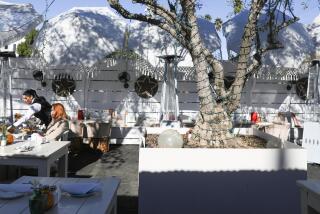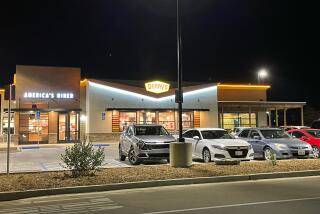Say hello to the carhop — an old friend who makes it easier to stay sheltered by dining in your vehicle
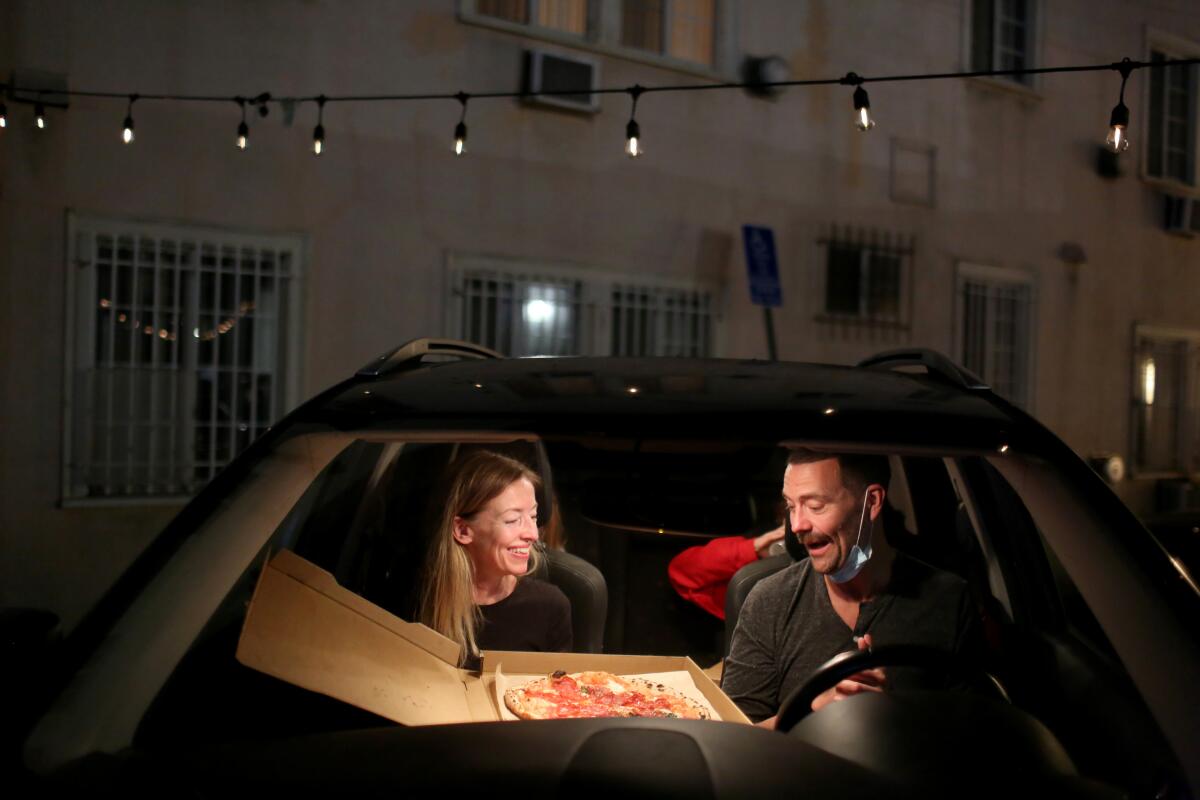
At dusk on a recent Saturday, a dozen cars cruised into the parking lot at L’Antica Pizzeria da Michele in Hollywood, reversing into spots under strings of white lights. Within 30 seconds, several masked young men had approached the cars, taking pizza orders from a distance. As the sky darkened, an indie romantic comedy called “Better Days” started to play on a screen erected at the edge of the parking lot.
“It’s not a common thing in my life now to go have dinner and a movie in my car,” said Juliet Batturaro, 22, a nurse from San Francisco who drove to Los Angeles in her green VW Beetle convertible. “This is different and unique. Being able to sit in your car and watch a movie — there’s something quaint about it, and it takes you back to old times.”
Batturaro was tested for COVID-19 and quarantined for two weeks before driving to meet a friend at Da Michele. “I think everybody my age is kind of frustrated because we like to go out and be out in the nighttime, and both [my friend and I] love to go out to eat,” she said. “Doing stuff like this is fun — to be able to be out in the world and still be safe about it.”
Owner Francesco Zimone’s operation isn’t the ‘50s-style carhop restaurant blasting rockabilly and employing servers on roller skates. The pizzeria owner improvised a modern version of the traditional American drive-in because he wanted his staff, and his restaurant, to survive the pandemic’s devastating economic effects.
Since L.A. County Department of Health’s outdoor dining ban kicked in on Nov. 25, a small but growing number of owners like Zimone have turned to the dine-in-car format as a safe, socially distanced option for doing business. By providing margherita pizzas, sparkling water and tiramisu to diners secluded in their cars, Zimone says his restaurant has managed to stay open and keep its staff employed — but just barely.
Other restaurants have pivoted to the carhop model, including the new Twohey’s in South Pasadena, which opened in October. Mel’s Drive-Ins in San Francisco and Los Angeles returned to carhop service last March. The Bob’s Big Boy locations in Burbank, Northridge and Downey revived carhop service in April.
Restaurants across the country, including Little Anthony’s diner in Tucson, Ray’s Drive-In in San Antonio and Kowloon’s in Saugus, Mass., have also established carhop service, though that can be weather-dependent, since it requires attaching a tray to an open window (for Kowloon’s, the service is seasonal and is suspended during winter). In addition, chain restaurants like Steak ‘n Shake and White Castle are hopping on the bandwagon.
“The math is simple in restaurants, and we have calculated a huge loss in the last 60 days, which is scary,” Zimone said. “With just 20 to 30 cars a night, the carhop has given us a thousand dollars more every weeknight, and around $1,500 every weekend evening.”
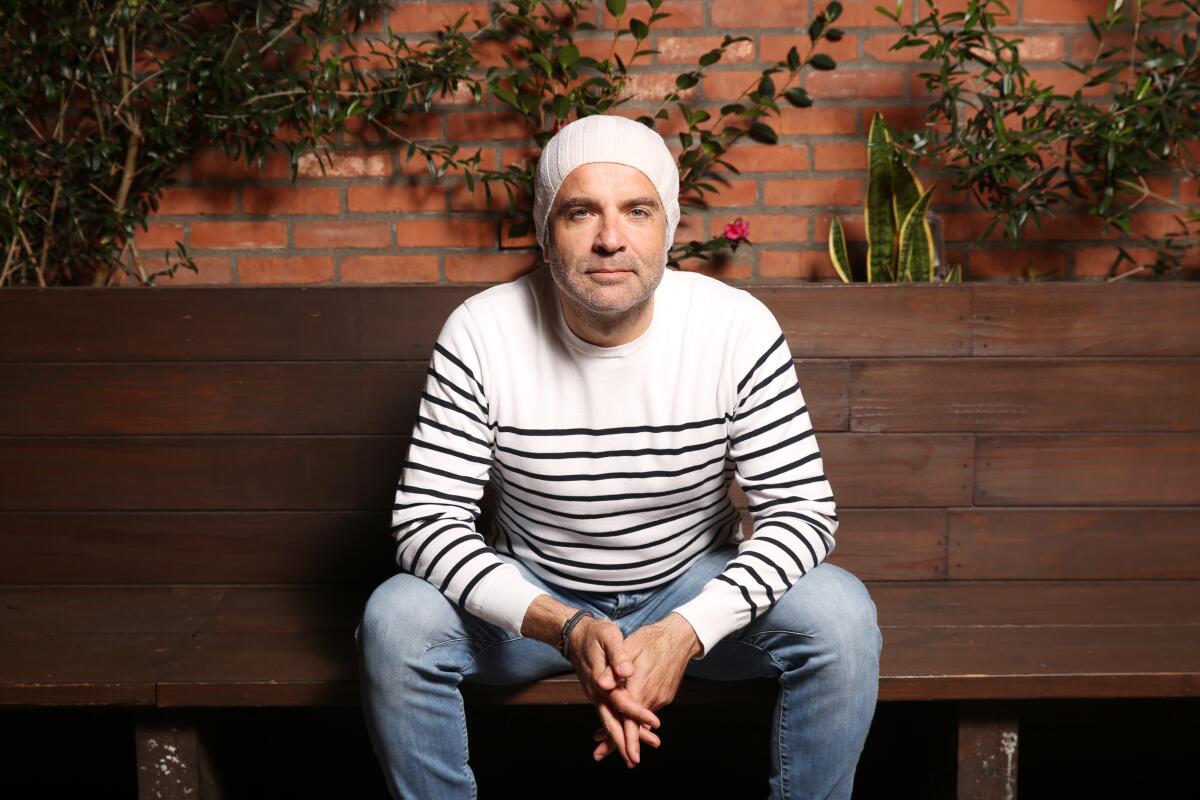
‘May I take your order?’
Carhops were introduced in the early 1920s with restaurants like Kirby’s Pig Stand in Texas and A&W Restaurants in California and peaked in the years after World War II. The social atmosphere that classic ‘50s carhop servers promoted may have ultimately contributed to their demise, as entrepreneurs in the ‘60s found drive-through windows more efficient than the carhop servers, men and women who were known to spend time socializing for better tips.
But carhop service has lingered in pop culture thanks to movies like “American Graffiti,” which featured the original San Francisco location of Mel’s Drive-In in the opening scene of the 1973 George Lucas film.
Are you new to drive-in dining? Here are some tips to help you master it.
Mel Weiss founded the original Mel’s Drive-In in 1947, and there are now four locations in San Francisco and four in Los Angeles. The chain, co-owned by Mel’s son Steven, grandsons Colton and Chasen, and their partner Gabriel Mendez, retired its carhop service in early ‘70s but revived it when it became clear that restaurants would suffer in the early months of the pandemic.
Understanding the power of nostalgia, Mel’s outfits its servers in ‘50s-style uniforms consisting of collared button-up white shirts, black bow ties, and of course, white hats bearing the word “Mel’s.”
Colton Weiss said older guests have memories of being served by carhops in their youth, but older fans aren’t the only ones taking to this retro trend. Rappers Xzibit and Wiz Khalifa and actor-comedian Cedric the Entertainer have been spotted at Mel’s West Hollywood and Santa Monica locations.
At Twohey’s in South Pasadena, carhop service began as a cautious pre-holidays experiment on Dec. 21. With its six spaces, the restaurant has been serving teens, families and couples out on date night, said owner Tanya Christos. Twohey’s dates back to 1947, when the first incarnation opened on Arroyo Parkway. When the location reopened in 1952 in Alhambra, it was built as a drive-in and remained one for 20 years, Christos said.
“Everyone wants a sense of normalcy in their lives,” Christos said.
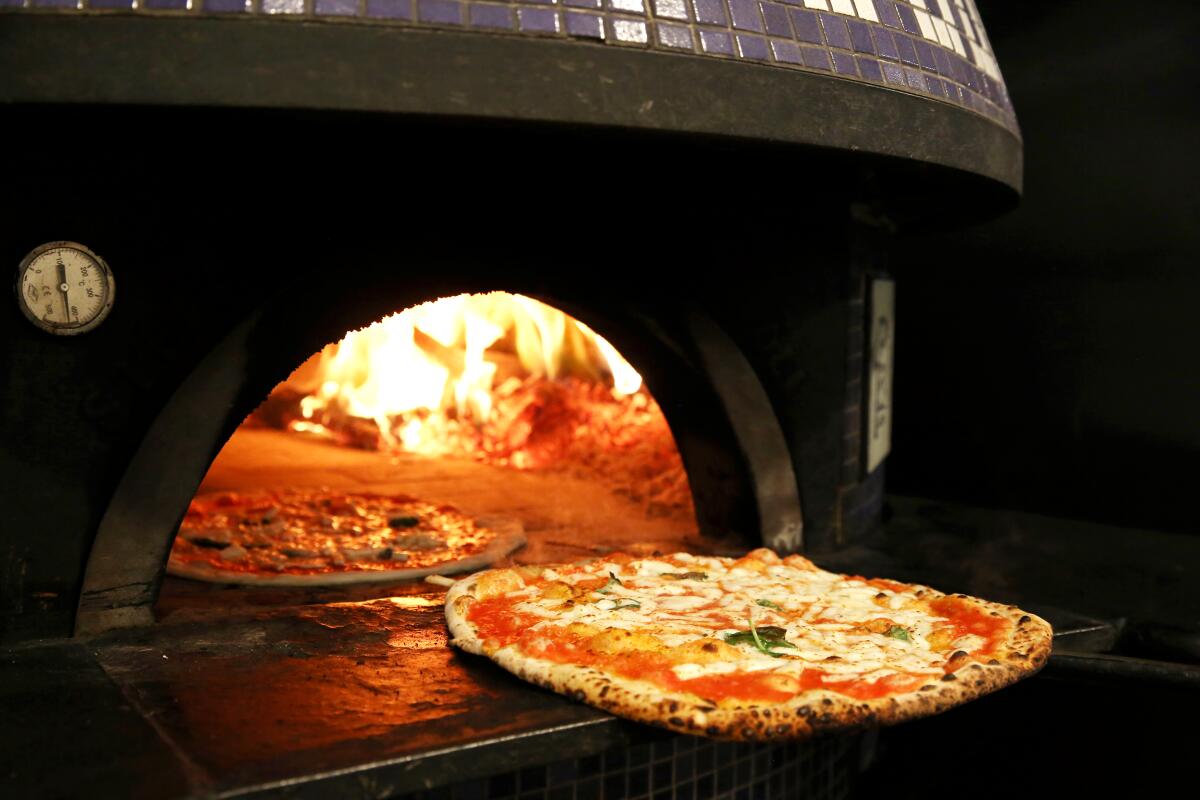
Astro Diner in Silver Lake is another nascent carhop, serving Greek omelets and hash browns to customers at all hours of the day. Behind the classic 24-hour diner, signs declare two reserved carhop-only spaces, but the service is available at any space in the large parking lot.
Owner Harry Siafaris, who moved to Los Angeles in 1952 and purchased Astro Diner in 1971, remembers the social appeal of the carhop era of the ‘50s. “Carhops were very popular in Los Angeles, but then they fell out of favor,” he said. Now, he sees his carhop serving a renewed purpose — providing friends, extended families and Alcoholics Anonymous support groups a place to gather safely. “Late on Monday nights, we had a group of seven, eight, sometimes nine people who would gather together at our diner [in separate cars]. They told us they had nowhere to go now, and we said, ‘Come to the carhop; we’ll serve you.’”
“A lot of our regulars are older people who want to be safe, and there’s a pregnant lady who comes often because she feels safe,” said manager Araceli Sollano. “Even after COVID ends, we’re going to keep doing it — it’s great for disabled people as well.”
Some restaurateurs are adding a twist or two to the traditional model. Mel’s, like Da Michele, is operating as a drive-in movie theater, screening retro flicks like “Clueless,” “Forrest Gump” and “Step Brothers.” Da Michele and Twohey’s are offering staff-curated Spotify playlists to complete the car experience.
Zimone, aware that many Angelenos are avoiding grocery stores, has begun offering carhop grocery service. Diners can scan a QR code and access a grocery menu featuring items like make-at-home pizza kits, imported cheese, handmade pasta and pasta sauce. After the film, servers load bags packed with goods into car trunks, allowing customers to skip a trip to the market, at least for a while.
More to Read
Eat your way across L.A.
Get our weekly Tasting Notes newsletter for reviews, news and more.
You may occasionally receive promotional content from the Los Angeles Times.
